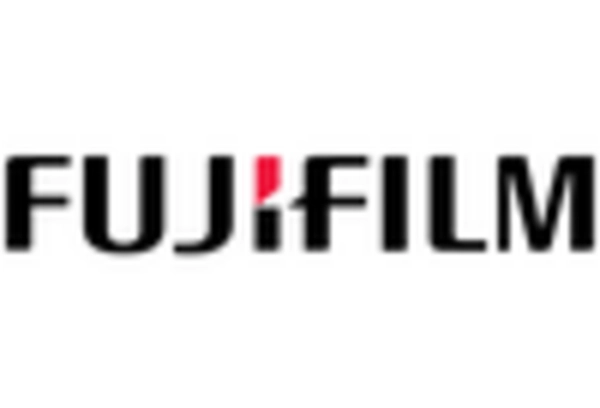Government Initiatives and Funding
Government initiatives aimed at improving healthcare infrastructure significantly impact the medical imaging-workstations market in France. The French government has allocated substantial funding to enhance diagnostic imaging capabilities across public and private healthcare sectors. Recent reports indicate that public health expenditure on medical imaging technologies has increased by 20% over the last three years. These investments are directed towards acquiring advanced imaging workstations and upgrading existing systems to meet modern healthcare demands. Furthermore, initiatives promoting research and development in medical imaging technologies are likely to foster innovation and drive market growth. As a result, the medical imaging-workstations market is poised to benefit from these supportive policies, which aim to enhance the overall quality of healthcare services in the country.
Rising Demand for Diagnostic Imaging
The medical imaging-workstations market in France is experiencing a notable increase in demand for diagnostic imaging services. This surge is primarily driven by the growing prevalence of chronic diseases and an aging population, which necessitates advanced imaging techniques for accurate diagnosis. According to recent data, the number of imaging procedures performed annually in France has risen by approximately 15% over the past five years. This trend indicates a robust need for efficient and high-quality medical imaging workstations that can handle increased workloads and provide rapid results. As healthcare providers strive to enhance patient outcomes, the demand for sophisticated imaging technologies is likely to continue its upward trajectory, thereby propelling the growth of the medical imaging-workstations market in the region.
Growing Focus on Patient-Centric Care
The shift towards patient-centric care is influencing the medical imaging-workstations market in France. Healthcare providers are increasingly prioritizing patient experience and satisfaction, which necessitates the adoption of user-friendly imaging systems. These systems are designed to facilitate better communication between healthcare professionals and patients, ensuring that patients are well-informed about their imaging procedures. Additionally, the integration of features that allow for personalized imaging experiences is becoming more prevalent. This focus on patient engagement is likely to drive the demand for advanced medical imaging workstations that not only deliver high-quality images but also enhance the overall patient experience. As healthcare facilities strive to meet these evolving expectations, the market is expected to witness sustained growth.
Technological Advancements in Imaging Systems
Technological innovations play a crucial role in shaping the medical imaging-workstations market in France. The introduction of advanced imaging modalities, such as 3D imaging and hybrid imaging systems, has transformed diagnostic capabilities. These advancements not only improve image quality but also enhance the speed of diagnosis, which is essential in critical care settings. The market is witnessing a shift towards integrated systems that combine various imaging techniques, thereby streamlining workflows in healthcare facilities. As hospitals and clinics invest in upgrading their imaging infrastructure, the demand for state-of-the-art medical imaging workstations is expected to rise. This trend suggests a promising outlook for the market, as healthcare providers seek to leverage cutting-edge technology to improve diagnostic accuracy and operational efficiency.
Increased Collaboration Among Healthcare Providers
Collaboration among healthcare providers is emerging as a key driver for the medical imaging-workstations market in France. As healthcare systems evolve, there is a growing recognition of the importance of interdisciplinary cooperation in delivering comprehensive patient care. This trend is leading to the establishment of networks and partnerships that facilitate the sharing of imaging resources and expertise. Such collaborations enable healthcare facilities to optimize their imaging capabilities and improve diagnostic accuracy. Furthermore, shared access to advanced medical imaging workstations allows for more efficient use of resources, ultimately benefiting patient outcomes. The increasing emphasis on collaborative care models suggests a positive trajectory for the medical imaging-workstations market, as providers seek to enhance their service offerings through strategic alliances.

















Leave a Comment